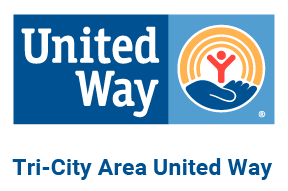https://ncadv.org/blog/posts/domestic-violence-and-the-lgbtq-community
Wednesday, June 6, 2018
Domestic Violence and the LGBTQ Community
Because the majority of the domestic violence awareness movement has focused on heterosexual relationships, members of the LGBTQ community have been largely left out of the movement. However, recent research shows that LGBTQ members fall victim to domestic violence at equal or even higher rates compared to their heterosexual counterparts.

9 Quick Statistics about Domestic Violence and the LGBTQ Community
- 43.8% of lesbian women and 61.1% of bisexual women have experienced rape, physical violence, and/or stalking by an intimate partner at some point in their lifetime, as opposed to 35% of heterosexual women.
- 26% of gay men and 37.3% of bisexual men have experienced rape, physical violence, and/or stalking by an intimate partner in their lifetime, in comparison to 29% of heterosexual men.
- In a study of male same sex relationships, only 26% of men called the police for assistance after experiencing near-lethal violence.
- In 2012, fewer than 5% of LGBTQ survivors of intimate partner violence sought orders of protection.
- Transgender victims are more likely to experience intimate partner violence in public, compared to those who do not identify as transgender.
- Bisexual victims are more likely to experience sexual violence, compared to people who do not identify as bisexual.
- LGBTQ Black/African American victims are more likely to experience physical intimate partner violence, compared to those who do not identify as Black/African American.
- LGBTQ white victims are more likely to experience sexual violence, compared to those who do not identify as white.
- LGBTQ victims on public assistance are more likely to experience intimate partner violence compared to those who are not on public assistance.

Types of Domestic Violence Affecting the LGBTQ Community
- 20% of victims have experienced some form of physical violence
- 16% have been victims to threats and intimidation
- 15% have been verbally harassed
- 4% of survivors have experienced sexual violence
- 11% of intimate violence cases reported in the NCADVP’s 2015 report involved a weapon.

Unique Elements of Abuse in LGBTQ Community
There are several aspects of intimate partner violence which can be unique to the LGBTQ community. “Outing” or threatening to reveal one partner’s sexual orientation/gender identity may be used as a tool of abuse in violent relationships and may also be a barrier which reduces the likelihood of help-seeking for the abuse. Prior experiences of physical or psychological trauma, such as bullying and hate crime, may make LGBTQ victims of domestic violence less likely to see help.

Transgender Intimate Partner Violence
Transgender individuals may suffer from an even greater burden of intimate partner violence than gay or lesbian individuals. Transgender victims of intimate partner violence are more likely to experience threats or intimidation, harassment, and police violence within intimate partner violence. Specific forms of abuse occur within relationships where one partner is transgender, including:
- Using offensive pronouns such as “it” to refer to the transgender partner
- Ridiculing the transgender partner’s body and/or appearance
- Telling the transgender partner that he or she is not a real man or woman
- Ridiculing the transgender partner’s identity as “bisexual,” “trans,” “femme,” “butch,” “gender queer,” etc.

Why It Matters
Domestic violence is not limited to heterosexual relationships and can affect individuals of all sexual orientations and genders. WIthin the LGBTQ community, intimate partner violence occurs at a rate equal to or even higher than that of the heterosexual community. LGBTQ individuals may experience unique forms of intimate partner violence as well as distinctive barriers to seeking help due to fear of discrimination or bias.
Although the response to LGBTQ victims of domestic violence is gradually improving, the LGBTQ community if often met with ineffective and victimizing legal responses. Forty-five percent of victims do not report the violence they experience to police because they believe it will not help them. Further more, members of the LGBTQ community may be denied assistance and domestic violence services as a result of homophobia, transphobia, and biphobia.

Barriers to Seeking Services/Receiving Assistance
Several barriers exist to addressing LGBTQ intimate partner violence. These include:
- Societal beliefs that domestic violence does not occur in LGBTQ relationships
- Potential homophobia from staff of service providers, or from non-LGBTQ domestic violence victims they may come into contact with
- Lack of appropriate training regarding LGBTQ domestic violence for service providers
- A fear that airing the problems among the LGBTQ population will take away from progress toward equality or fuel anti-LGBTQ bias
- Domestic violence shelters are typically female only, and transgender individuals may not be allowed entrance due to their gender/genital/legal status.
- The dangers associated with “outing” oneself and risking rejection from family, friends, and society
- The lack of, or survivors being unaware of, LGBTQ–friendly assistance resources
- Low levels of confidence in the effectiveness of the legal system for LGBTQ people
Helpful Resources for LGBTQ Victims and Survivors of Domestic Violence
Everyone, including members of the LGBTQ community, deserves to live a life free from abuse.
If you or someone you love is an LGBTQ victim of abuse, call the National Domestic Violence Hotline for someone to talk to and referrals to local services.
If you have questions about your legal rights as an LGBTQ victim of domestic violence, read this helpful guide from the American Bar Association.
These organizations are working with the intersection of domestic violence and LGBTQ victims and survivors.



